Never have
Getting Data Up the Hill

June 2025 eBook www.radioworld.com
FOLLOW US
www.twitter.com/radioworld_news
www.facebook.com/RadioWorldMagazine www.linkedin.com/company/radio-world-futureplc
CONTENT
Managing Director, Content & Editor in Chief Paul J. McLane, paul.mclane@futurenet.com, 845-414-6105
Assistant Editor & SmartBrief Editor Elle Kehres, elle.kehres@futurenet.com
Content Producer Nick Langan, nicholas.langan@futurenet.com
Technical Advisors W.C. “Cris” Alexander, Thomas R. McGinley, Doug Irwin
Contributors: David Bialik, John Bisset, Edwin Bukont, James Careless, Ken Deutsch, Mark Durenberger, Charles Fitch, Donna Halper, Alan Jurison, Paul Kaminski, John Kean, Larry Langford, Mark Lapidus, Michael LeClair, Frank McCoy, Jim Peck, Mark Persons, Stephen M. Poole, James O’Neal, T. Carter Ross, John Schneider, Gregg Skall, Dan Slentz, Dennis Sloatman, Randy Stine, Tom Vernon, Jennifer Waits, Steve Walker, Chris Wygal
Production Manager Nicole Schilling Art Editor Olivia Thomson
ADVERTISING SALES
Senior Business Director & Publisher, Radio World John Casey, john.casey@futurenet.com, 845-678-3839 Advertising EMEA Raffaella Calabrese, raffaella.calabrese@futurenet.com, +39-320-891-1938
SUBSCRIBER CUSTOMER SERVICE
To subscribe, change your address, or check on your current account status, go to www.radioworld.com and click on Subscribe, email futureplc@computerfulfillment.com, call 888-266-5828, or write P.O. Box 1051, Lowell, MA 01853. LICENSING/REPRINTS/PERMISSIONS
Radio World is available for licensing. Contact the Licensing team to discuss partnership opportunities. Head of Print Licensing Rachel Shaw licensing@futurenet.com
MANAGEMENT
SVP, MD, B2B Amanda Darman-Allen
VP, Global Head of Content, B2B Carmel King MD, Content, Broadcast Tech Paul J. McLane
Global Head of Sales, Future B2B Tom Sikes
Managing VP of Sales, B2B Tech Adam Goldstein VP, Global Head of Strategy & Ops, B2B Allison Markert VP, Product & Marketing, B2B Andrew Buchholz Head of Production US & UK Mark Constance Head of Design, B2B Nicole Cobban

FUTURE US, INC.
Future US LLC, 130 West 42nd Street, 7th Floor, New York, NY 10036
All contents ©Future US, Inc. or published under licence. All rights reserved. No part of this magazine may be used, stored, transmitted or reproduced in any way without the prior written permission of the publisher. Future Publishing Limited (company number 02008885) is registered in England and Wales. Registered office: Quay House, The Ambury, Bath BA1 1UA. All information contained in this publication is for information only and is, as far as we are aware, correct at the time of going to press. Future cannot accept any responsibility for errors or inaccuracies in such information. You are advised to contact manufacturers and retailers directly with regard to the price of products/services referred to in this publication. Apps and websites mentioned in this publication are not under our control. We are not responsible for their contents or any other changes or updates to them. This magazine is fully independent and not affiliated in any way with the companies mentioned herein.
If you submit material to us, you warrant that you own the material and/ or have the necessary rights/permissions to supply the material and you automatically grant Future and its licensees a licence to publish your submission in whole or in part in any/all issues and/or editions of publications, in any format published worldwide and on associated websites, social media channels and associated products. Any material you submit is sent at your own risk and, although every care is taken, neither Future n or its employees, agents, subcontractors or licensees shall be liable for loss or damage. We assume all unsolicited material is for publication unless otherwise stated, and reserve the right to edit, amend, adapt all submissions.
Radio World (ISSN: 0274-8541) is published bi-weekly by Future US, Inc., 130 West 42nd Street, 7th Floor, New York, NY 10036. Phone: (978) 667-0352. Periodicals postage rates are paid at New York, NY and additional mailing offices. POSTMASTER: Send address changes to Radio World, PO Box 1051, Lowell, MA 01853.
Getting data up the hill
Let’s sort

Paul McLane
Editor in Chief
Never have there been so many options for sending your radio station’s audio and metadata to the transmitter site.
In this ebook, Radio World returns to one of the most important decisions that radio engineers must make in designing their air chains.
Questions we explore include licensing and unlicensed options, internet connectivity, the state of wireless IP links, various bands including 950 MHz, MicroMPX, last-mile challenges, the use of systems like Starlink, redundancy and how to stay connected in natural disasters. Sharing their expertise are Josh Bohn of MaxxKonnect, Paul Cintolo of Comrex, Jacob Daniluck of Tieline, William Harrison of WETA(FM), Cindy Hutter Cavell of the Spectrum Group at Capitol Airspace, Tommy McElmeel of Family Radio, Ted Nahil of 2wcom and Jeff Welton of Nautel.
I’d love to hear from you with comments on these interviews or suggestions for future ebooks. Email me at radioworld@futurenet.com. Thanks as always for being part of the Radio World community.
THIS ISSUE
4 Cindy Hutter Cavell: When it comes to STL, the possible combinations are endless
6 Jeff Welton: IP links are becoming a necessity
8 William Harrison: I look for backups to the backups
12 Josh Bohn: There’s room for both IP and 950 MHz links
14 Tommy McElmeel: Internet reliability is still a matter of concern
17 Paul Cintolo: Tech support requires facts, not assumptions
20 Jacob Daniluck: MPX codecs reduce operational costs
22 Ted Nahil: Our need for bandwidth has increased almost exponentially
3
When it comes to STL, the possible combinations are endless
If microwave path engineering is not your forte, find an expert to help you
Cindy Hutter Cavell is director of the Spectrum Group, Capitol Airspace Group. She’s had a 48-year career in network, television and cable broadcasting and is a recipient of the NAB Television Engineering Achievement Award. She discussed STL links this year at the SBE Ennes Workshop at the NAB Show.
What’s the most notable trend in STL, Cindy?
Cindy Hutter Cavell: It’s been trending for a while, but the refinement of IP delivery and the development of more radio transmitters with IP signal inputs has allowed for a much larger range of options for signal delivery to the transmitter.
How can a broadcaster choose the best option from among the choices available, including licensed vs. unlicensed, the different bands and many options available?
Hutter Cavell: The higher the frequency band, the wider the channel widths available, which translates into more throughput.
However, the higher the frequency band, the more fragile the link becomes. Higher-frequency paths will stay reliable only over a shorter STL distance and are more susceptible to rain fade.
For example, an 11 GHz link is far more “line of sight” and impacted by obstacles than a 950 MHz link. Often, a
“ Higherfrequency paths will stay reliable only over a shorter STL distance and are more susceptible to rain fade.
950 MHz link will “bend around” some tree growth along the path, where the 11 GHz link would be stopped by the tree growth.
But an 11 GHz link has far more data capacity (150 Mbps) than a 950 MHz link (about 1 Mbps), which is much more suitable for a regional station hub where there are several owned stations in a market transmitting from a central tower, or a station that has several HD channels.
Meanwhile if it’s raining hard, an 11 GHz link becomes much less stable than a 950 MHz link because the wavelength of an 11 GHz transmission is approaching the size of a raindrop, so it’s more impacted by heavy rain.
As far as analog vs. digital microwave, here are some considerations:
950 MHz links are the only microwave links still available for analog transmission. A “refresh” of the old analog units is commercially available for a very attractive price.
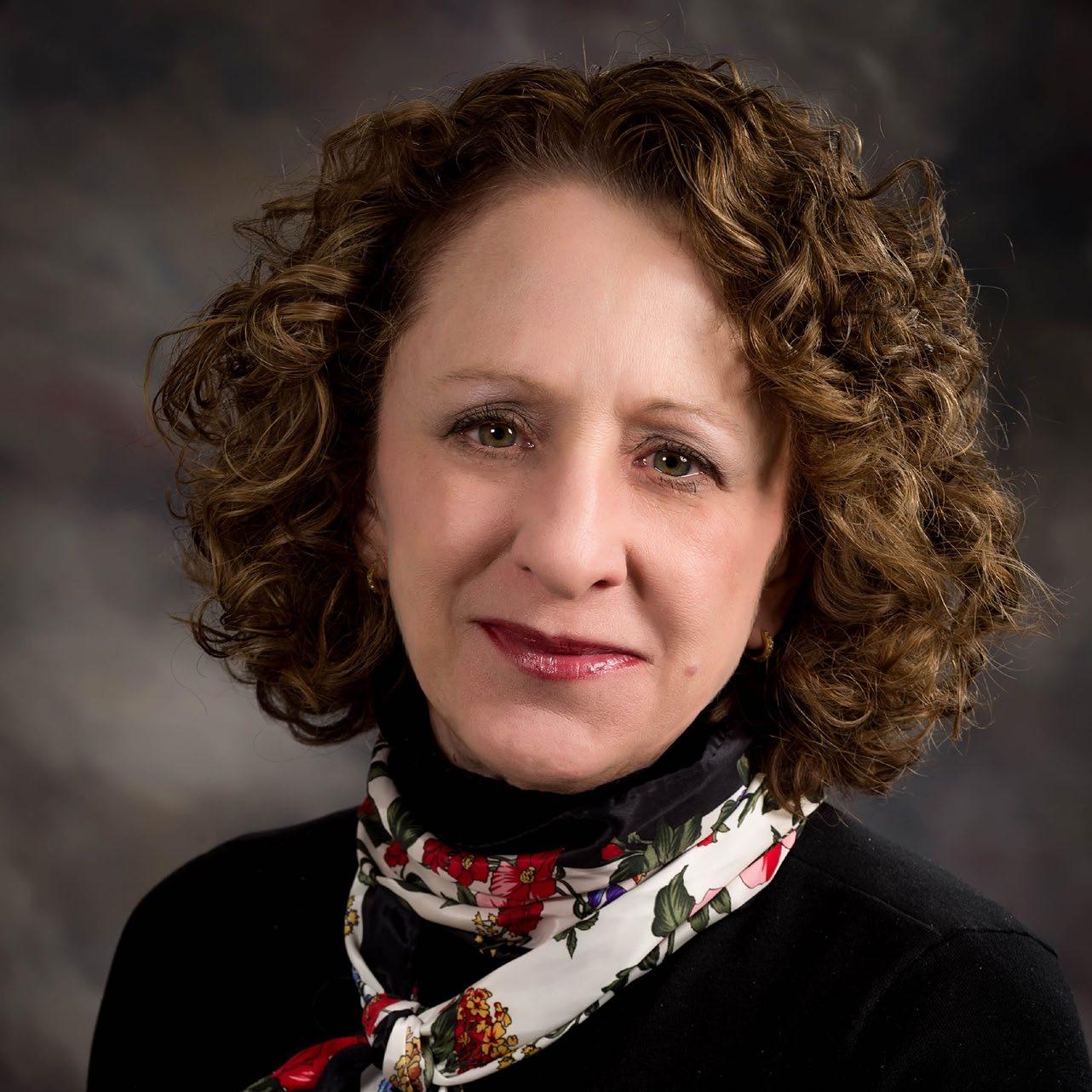
Getting Data Up the Hill
Remember that analog links are NOT bidirectional, so they can’t be used for return signaling from the transmitter site.
Also, new transmitters may not have analog inputs any longer, so the analog signal may have to be converted to AES or IP before the transmitter input.
Microwave STLs in all frequency bands are available in a digital version. They are bidirectional, so transmitter data, remote control GUIs, security camera signals and other transmitter site-related signals can be transmitted on the return (TSL) link.
Each direction must be licensed, so the link has two licenses rather than one.
And throughout this discussion, keep in mind that the possible combinations of transmitter power, antenna size, frequency band, modulation scheme and Forward Error Correction (FEC) to create the “perfect” IP microwave link are endless. If microwave path engineering is not your
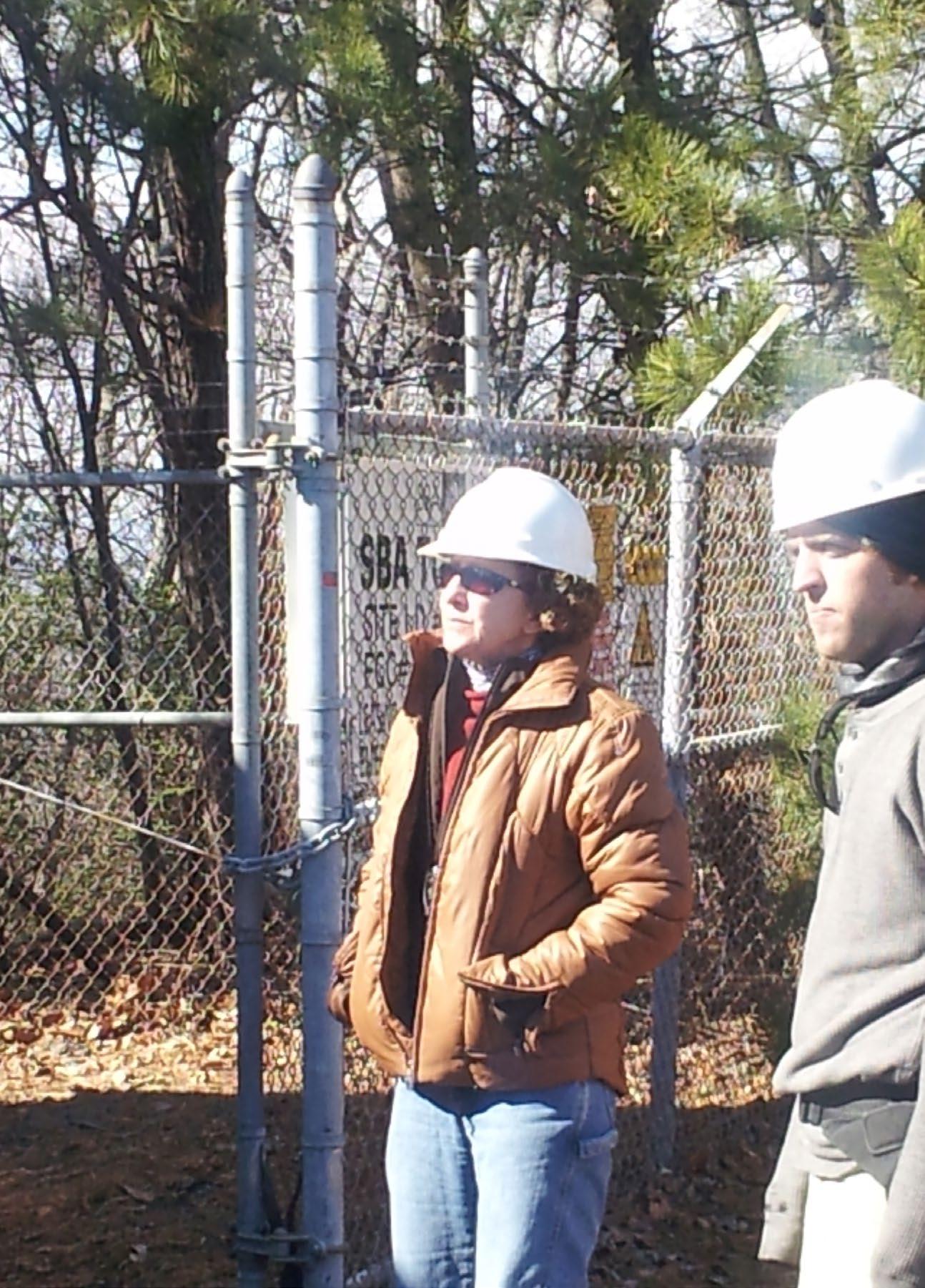
forte, find someone who is an expert to help you. They can help you figure out what the “sweet spot” is.
For radio-based STLs, which frequency ranges are best now? What are the licensed and unlicensed options?
Cavell: There are always unlicensed options in 2.4 GHz, 5.8 GHz and 24 GHz. Several manufacturers carry and provision unlicensed microwave products that are very cost-effective and easy to set up.
However, while it’s cost-effective and simple, unlicensed microwave may not always be the right answer for an STL, as there is no recourse for interference to your signal.
If the tower is in a very densely populated area with several tenants on the tower, unlicensed microwave can be a big risk. Note that if there is a cell carrier on your tower, many use unlicensed microwave as a temporary backhaul — their own STL back to the central office — which could interfere with any unlicensed microwave the station may want to use.
Licensed microwave comes many different frequency bands. They are licensed either under Part 74 as a Broadcast Auxiliary Service (BAS), or under Part 101 as a commercial microwave service.
There is only one Part 74 frequency band that can be used for radio: 950 MHz, either analog or digital. The license renews along with the radio station main license, so it’s not one extra thing to worry about.
There are several frequency bands available for digital microwave, 6 GHz, 11 GHz, 18 GHz and 23 GHz, in addition to other higher-frequency bands not suitable for STLs. These licenses are good for 10 years, and do NOT renew with the main station license; they must be renewed separately.
Some stations are now running much of the air chain in the cloud, a few even with no studios at all. What are the implications of this trend for STL infrastructure?
Cavell: “The Cloud” needs access to the internet to send content to the transmitter site. Some sort of wireless STL is advisable as a backup.
However, if there is no longer any studio at all, a handy backup is to have a server at the transmitter site that can play content, commercials and station IDs in case the link to the cloud is lost.
Many radio transmitter sites still do not have cell or hardwire connectivity. What options do these stations have?
Cavell: WISPs (Wireless Internet Service Providers) are often willing to provide free or nearly free access for your station in exchange for being on your tower.
And satellite internet access is an option but this is not always reliable due to weather. Heavy rain will interrupt Very Small Aperture Satellite (VSAT) reception.
IP links are becoming a necessity
They allow you to take full advantage of telemetry, redundancy and the latest technology
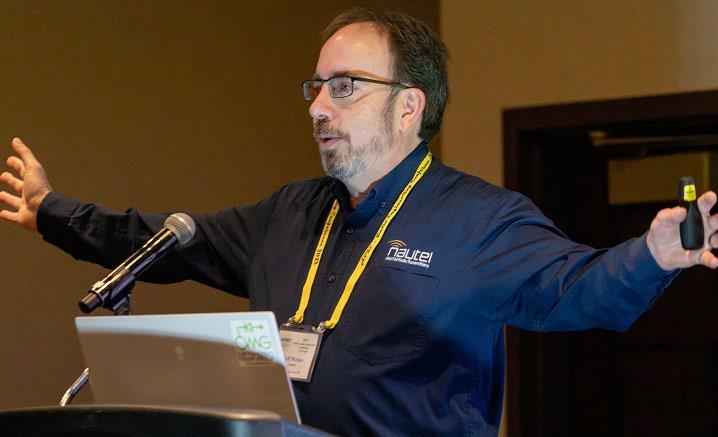
Jeff Welton is the regional sales manager, Eastern U.S., for Nautel. “I was hired as a field service tech taking the calls and crawling through the equipment at Zero Dark :30.” Now he has been with the company for almost 35 years and is an in-demand speaker on topics ranging from IT security to grounding and lightning protection. He still crawls through the occasional transmitter.
In this ebook we’re exploring how stations get their audio and data “up the hill” to the transmitter in 2025. What’s the most notable trend?
Jeff Welton: The biggest thing is that, more and more, it is ALL data, even the audio.
It used to be that an IP connection was on the “would be nice to have … someday” list. But it is rapidly becoming more of a requirement than an option. You can still get the job done without an IP link, but if you want to take full advantage of telemetry offered, redundancy options or the latest technology, having that IP link is fast becoming a necessity.
As we proceed with advances in virtualization and content delivery, this will become even more apparent.
What are the most common types of calls and questions you get from radio stations about their IP links, and what can we learn from them?
Welton: Two of the biggest tend to be related to throughput and stability — whether latency or just the ability to make a connection.
You “could” deliver audio over an LTE modem in a
questionable coverage area, and this might be suitable for backup purposes in a pinch, but is it recommended? Probably not.
By the same token, some audio over IP requires several MBps of throughput. Sending that over a 30-mile 900 MHz data link might be problematic. It’s always good to determine what you need to send over the link, get a good picture of the link budget, then allow for future growth. Not just 10–25% headroom, but at least two to three times what you think you need, if not more.
Beyond that, we get a lot of trouble calls that boil down to basic network configuration issues — not a problem with our equipment per se, but if you can’t get the RDS to the receiver, the transmitter is the first thing you think about. Having IT experts available, whether on staff or via contract with an managed services provider, is up to you, but having somebody with intrinsic knowledge of network setup and management will be crucial.
How can a broadcaster choose the best option from among the many choices available, meaning licensed or unlicensed, the different bands and so forth?
Welton: That is like asking me what car you should buy! There are several questions they will need to answer: How much data do they need to move, how congested are the various bands in their market(s), is there line of sight between studio and transmitter, is cable or fiber available, or will this need to be a wireless link?
In some cases, if the decision is made to go wireless, the first contact should probably be to the nearest SBE chapter, if there’s one available; they will frequently have a volunteer frequency coordinator who can provide some insight. In addition, reaching out to local ISPs could give an idea as to availability of fiber or cable connections — again, the requirement to have engineering assistance with solid network management knowledge, whether in-house or contracted, will be key to getting this question answered.
What about the cloud, what are the implications for STL infrastructure?
Welton: Again it’s throughput and stability that come to mind, along with security. Running all content over IP links, whether wired or wireless, will almost always involve public internet at some point, which absolutely increases the need for improving security — and this is something we, as an industry, do not do really well at.
When I can use an IoT search engine and see over 1,300 of a common brand of audio codec visible online, and
Getting Data Up the Hill
when I find about 20 transmitters of various makes online, we need to do better. Much better.
Keep in mind that, even if you are not using default user names and passwords — and many still are — a device that’s visible online is sending an invitation to be compromised.
We, as an industry, can definitely improve when it comes to IT security. The biggest things that come to mind are education and VPNs.
Education, because roughly 80% of malware and ransomware attacks occur because somebody “clicked that link” or “plugged in that USB stick that they were using at such and such hotel business office, or this or that remote.”
VPNs, because once you’ve educated everybody inside
“
to have the factory log directly into the equipment and diagnose remotely via IP.
As technology evolves — with more AoIP, or with virtualized HD air chains, or as we look to the future with EAS as a software payload — the sites that are able to provide IT connectivity are going to have an advantage over those who can’t, both in terms of being able to get back on air faster in the event of a failure — whether by providing alternate paths or due to manufacturers being able to remotely troubleshoot — and in terms of the services they will be able to provide.
Some examples could include metadata delivery — RDS artist/title/advertising, or HD program data and artwork/ advertiser logos — possibly weather-related content, future
Even if you are not using default user names and passwords — and many still are — a device that’s visible online is sending an invitation to be compromised.
the operation, an encrypted link goes a long way toward keeping everybody else out.
These days, the cheapest router available at big box stores will have VPN capabilities built in. If you don’t want to configure the hardware box, there are always software (usually subscription) VPN services available. But education of anybody touching your network is key. Having written (and enforced) IT security policies goes a long way.
Many sites still do not have cell or hardwire connectivity.
Welton: There are a couple of options here: Wi-Fi bridges (IP links) if there’s decent line of sight, or LEO satellite, such as Starlink and others. Again, the distance and the throughput requirement will go a long way toward determining what works.
A wireless IP bridge is a one-time cost when run on a closed network, whereas low earth orbit satellite internet will come with a monthly bill as well as heightened security requirements.
There are some options for conventional satellite IP delivery, but those come with enough challenges — rain fade, potential loss of spectrum — that they should be researched carefully.
I’m told that many transmitter sites also still lack substantial IT infrastructure. What are the implications?
Welton: At the moment, it’s not a huge issue, although it can increase time required to troubleshoot, vs. being able
developments, etc. As I mentioned, connectivity increasingly is going to become a necessity rather than a luxury.
What do natural disasters like the ones in California and North Carolina teach us about keeping links operating?
Welton: Redundancy is key. If using public internet, assume it will be down during a natural disaster, or at the very least so overwhelmed as to be unreliable for time-critical content. The same holds true for cellular networks.
Closed networks will require backup power at both ends and every access point. There’s always the chance that the tower holding the antenna will be gone, so multiple paths will be important. Basically, the same considerations used to ensure delivery via analog radio STLs would apply to an IP STL.
If there’s no antenna at one end, at the other end or both, there will be no signal, so having as many options as possible will help minimize that risk.
What other best practices do you recommend to ensure continuity of operations?
Welton: If you are using public internet for any part of the delivery path, have multiple ISPs … and make sure that they’re not both using the same backbone.
For example, some smaller ISPs will contract space on the pipe of a major provider. Thus, if the big pipe suffers backhoe fade, the smaller ISP will be down as well, so dual ISPs only help if they’re using different hardware.
I look for backups to the backups
Single points of failure are a recipe for disaster
William Harrison, CSRE, DRB, CBNE, is chief engineer of WETA(FM) and co-chair of SBE Chapter 37 in Washington, D.C. He has done work for clients including PBS, NPR, The Metropolitan Washington Ear and several FM and TV broadcasters.

What would you say is the most important recent trend in how stations are delivering audio and data to their sites?
William Harrison: It is how broadcasters have embraced internet protocol, specifically via public internet. It has become the default delivery mechanism, as opposed to the exception.
In the past, we relied on specialized systems to allow multiplexing of audio, control and even extending a POTS line via dedicated circuits like ISDN, T1, microwave or even fiber. These days it seems we’re sending even more things over commodity services, via copper, cable, fiber and low earth orbit satellite. That translates directly to savings, especially when you consider the cost of installing a dedicated microwave system.
Speaking of which, what role do satellite internet-based systems like Starlink, Telesat, OneWeb and others play now?
Harrison: This is something I’ve been looking into quite a bit. Services like Starlink are attractive for use as an STL, especially in areas where options are limited at the transmitter. The cost of purchasing and installing a typical microwave system often can fund the usage charges for Starlink for several years.
Taken to the next step, where Starlink terminals are installed at both the studio and transmitter, you gain another layer of redundancy. The STL no longer traverses the public internet; it goes from your studio to the satellites, then down to your transmitter. It’s not quite a private link, but it’s not a public one at that point either.
On the other hand, you don’t get control of when those terminals update, which happens often and can take several minutes. If you rely solely on something like Starlink for your STL, you’re going to have plan carefully to ensure that those updates don’t take you off the air.
In Radio World’s coverage we have documented that more stations are putting at least some of their air chain components in the cloud, and a few use no studios at all. What are the implications for STL?
Harrison: It depends. Running an air chain in the cloud can be fine, if it has been designed in a way that provides redundancy and graceful degradation. If your implementation in the cloud can’t be switched from one data center to another, what do you do when your
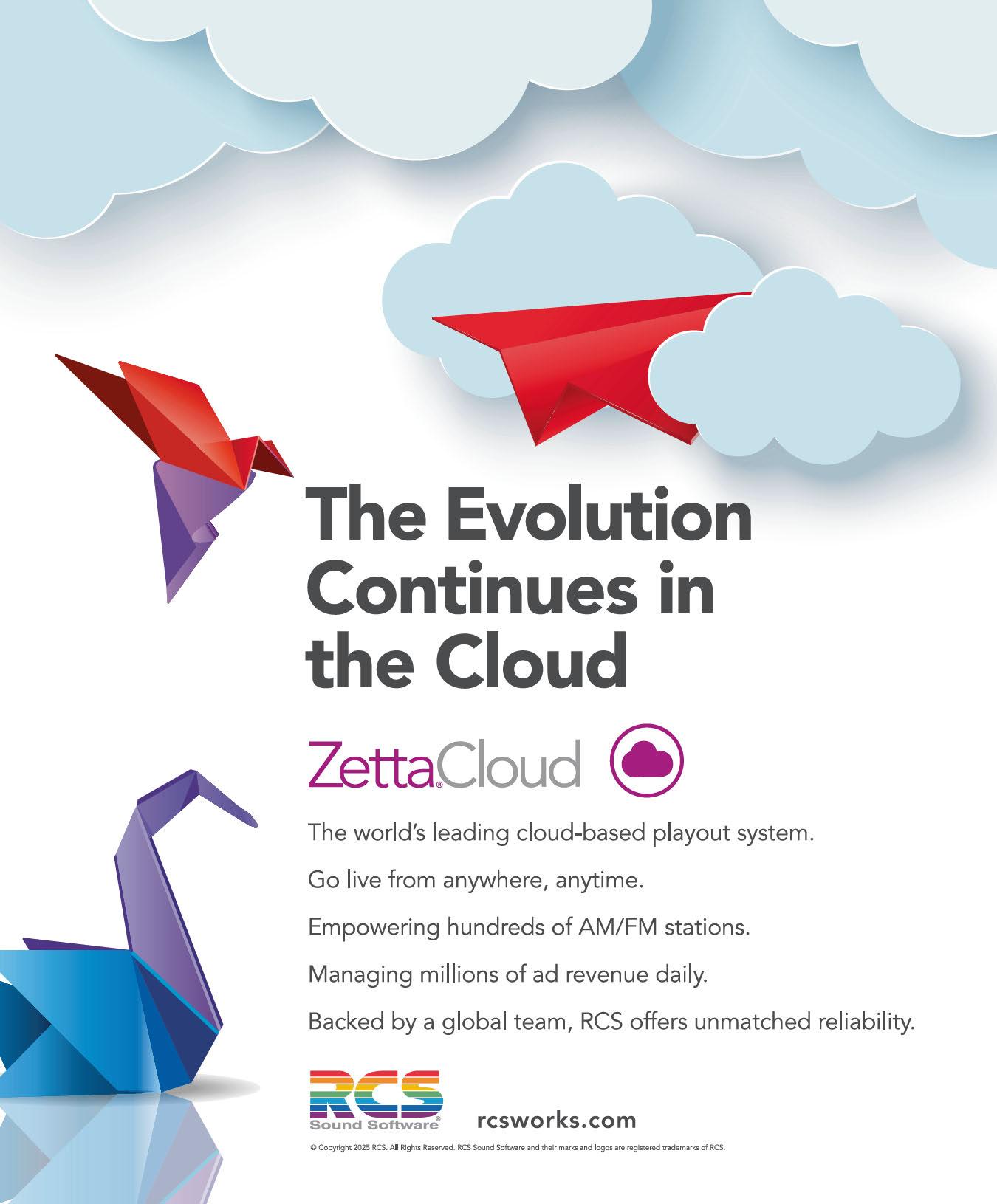
Getting
data center has an issue? Likewise, if you’re tied to one vendor’s infrastructure, what happens when that vendor has a problem?
Standardization is your friend here. Implementing a configuration that can migrate between data centers and even providers is going to result in the lowest risk; but there will still be risk involved.
Meanwhile many sites still don’t have even cell or hardware connectivity. What do you do in that case?
Harrison: Stations have been dealing with this issue for a very long time. The old 950 MHz microwave systems were often unidirectional, in order to get audio from the studio to the transmitter; hence the name STL. Sometimes you would see a second, discrete system installed to create the reverse path, appropriately named TSL, which typically wasn’t absolutely required for operation and provided significantly less bandwidth.
“
full authority over anything that connects to it. This can be both a good and a bad thing.
One of my sites has extremely limited network connectivity, and when the IT department pushes major updates to the computers there or scans for vulnerabilities, it typically results in audio issues because the network simply can’t keep up.
The solution? Better cooperation between engineering and IT, to schedule updates and scans, and ensure that backup systems are in place prior to initiating them. And it never hurts to bring one of the IT folks to the site so they can understand that it isn’t an office building with tons of resources, as they might think.
Are there tips you recommend to harden or prepare station audio for delivery over today’s links?
Harrison: Redundancy, redundancy, redundancy. I look for backups to the backups I already have in place. Often I see situations with several paths for the audio
If you rely solely on something like Starlink for your STL, you are going to have plan carefully to ensure that those updates don’t take you off the air. ”
A station running only analog obviously has very different requirements than a station running several HD channels, or subcarriers, or complex systems for monitoring and control. Situations vary.
Regardless, there are usually options to be had, with LEO satellite internet being a popular one right now. Another I’ve seen is to locate a nearby site that does have connectivity and using an inexpensive unlicensed link to bring it to your transmitter.
I know of an installation where the local American Legion hall could get internet, and the engineer happened to be a member. He suggested that he pay for internet for the hall in exchange for being able to install a small 2.4 GHz dish on the building to extend it to his tower. They’ve been operating that way for several years now.
Many transmitter sites also lack substantial IT infrastructure. What are the implications?
Harrison: Again, situations vary. Some transmitter site LANs are air-gapped from any network; others are tunneled back to the studio, and the IT department has
to get to the transmitter, but all going through a single device, such as an IP codec that can stream splice, but only has a single power supply. That’s a recipe for disaster — audio is arriving from several paths, but there’s no way to get it on air.
I also believe in applying the same logic to those systems that the IT folks apply to their backups: Test them. If you aren’t actively monitoring your backup links, you don’t know if they are working — or will work when you need them to.
It’s about ensuring continuity of operations. Harrison: Personally, I’m a big fan of graceful degradation. Redundant links don’t neccessarily need the exact same specs as the primary.
For example, uncompressed stereo audio is ideal, but in the event it isn’t available, I’d rather be on the air with compressed program audio in mono than be silent. This is one of the reasons I’m such a fan of adaptive HLS. It can change the quality of audio on the fly as network conditions change. Essentially, the audio is encoded at multiple qualities, and the endpoint asks for a specific
Getting Data Up the Hill
one. Depending on what happens — packets arriving late, out of order, missing, collisions etc. — the endpoint can ask for a lower-quality version. Once network conditions improve, the endpoint can ask for higher quality again.
Is that what your talk at this spring’s Public Radio Engineering Conference was about?
Harrison: I gave a presentation about “non-traditional STLs.” For the most part, engineers are taught that an STL requires sufficient bandwidth for linear, uncompressed audio, but failing that, we choose a compromise of compression and bandwidth, and that becomes the new requirement. And as stations went from just an analog audio feed to adding RDBS, HD channels, PAD, PSD and control, we ended up using a bunch of different systems on different paths to get everything to the site: audio over a microwave; metadata over a serial link; PAD and PSD over public internet.
That makes it next to impossible to sync up. Enter HTTP Live Streaming, or HLS. As you encode, everything becomes packetized, so the audio plays out in sync with the appropriate metadata and control. You can even embed commands in the HLS stream, telling a receiver
you keep up to date with firmware, zero day exploits and other advisories. And finally, make backups and documentation. Nothing’s worse than needing to replace a network device, be it from failure or compromise, and having no idea how the previous one was set up so you have to start from scratch.
Should audio be processed differently based on the type of STL infrastructure?
Harrison: This is a great question and difficult to answer. In certain circumstances, yes, the audio should most definitely be processed for the link. Some links simply have narrower bandwidth than others, so it’s a given that there needs to be some way of compensating for that fact. Not every link can handle full-fidelity linear audio, especially when trying to send multiple signals to a site.
This also comes into play as you consider backup systems, and the station might have to decide what takes priority. For example, consider a station with two channels, main and HD2, with primary delivery over an IP codec. In the event of the failure of the codec or the ISP, there might be a backup microwave system. If it’s an IP-based system, perhaps the signals need to be
“ Enter HTTP Live Streaming, or HLS. ... Now broadcasters can take advantage of all that R&D and adapt it for our own use. ”
to switch to a different stream, or initiate an EAS test. And it adapts to changing network conditions, so if your link suddenly becomes congested, you still end up with audio, just at a lower bitrate. Big players like Netflix and Hulu invested millions in this technology and have been using it for years. Now broadcasters can take advantage of all that R&D and adapt it for our own use.
How can we secure the “pipe” against bad actors?
Harrison: Well, obviously the most secure pipe is the one nobody has access to, like a dark fiber. But those are difficult to come by. The next best thing would be to ensure that you have proper security at both ends and are encrypting your traffic through a tunnel. Verify you are only exposing the absolute minimum possible to the rest of the world, and make certain that
compressed in order to fit the available bandwidth. But if it’s an AES audio microwave, which channel is more important to use it for? Or would there be a preference to keep both up, but in mono instead of stereo?
And what is the role of MicroMPX in this discussion?
Harrison: MicroMPX is great for bandwidth limited links. We don’t live in an ideal world with unlimited capacity, and it truly helps to keep things sounding good without requiring major upgrades to infrastructure. I’m also a fan of how it can be adjusted to use more or less bandwith, depending on the circumstances of the link. Just as with audio processing, using MicroMPX can help significantly in a situation where a primary link has failed, and a reduction in bandwidth is the only way to keep multiple channels on the air.
There’s room for both IP and 950 MHz links
Josh
Bohn talks
compression, satellites and the need for backups
Writer

Nick Langan Content Producer, Radio World
Afew weeks ago, Josh Bohn visited a station still using a TFT 950 MHz STL transmitter that was made in 1988. “That’s before my wife was born,” Bohn remarked.
A lot has changed in 37 years. Bohn’s work as CEO of MaxxKonnect often focuses on delivering all kinds of audio and telemetry over IP — even across limited connections. That capability, he noted, is a relatively recent development.
The 400 kbps bandwidth that MicroMPX was originally designed to use works well over non-metered fiber, cable or DSL, Bohn said. That level of data usage would burn through over 400 GB per month. That translates into big dollars for data consumption.
“To say that’s a dealbreaker for 99% of customers would be putting it mildly,” he said.
That’s where the insight of Hans van Zutphen at Thimeo has proven important. Van Zutphen has continued to advance the MicroMPX compression algorithm, which now enables MPX delivery at much lower bitrates.
Bohn praised the work, noting that his parent entity Triple Helix Technologies has partnered with Thimeo to leverage the technology.
“The result is not needing a fiber link to support MPX over IP,” Bohn said, “thanks to compression that doesn’t compromise audio quality.”
Which flavor is for you?
With cloud-based air chains growing in popularity, Bohn emphasized that having multiple IP connections at a site will become the norm. As with anything, IP links can and will fail. For cloud-based operations, Bohn recommends a reliable backup, such as an LTE or robust satellite connection.
He practices what he preaches: He owns two stations in Alabama, 1490 WIEZ(AM) and 94.7 W234DN Decatur, and operates 1320 WENN(AM) Birmingham and its 92.3
translator (via an LMA) — both of which use internet-based IP STLs. These setups allow him to run codecs over different providers and services, with full visibility into camera and security systems.
“We’re using a mix of our MaxxKonnect Satellite internet, as well as MaxxKonnect LTE service for these sites. That way, if one of the diverse delivery methods fails, the other will still be up. You can’t get physical-site security data with a 950 MHz link,” he said. “There’s no return path.”
With his experience in the industry, Bohn is familiar with the myriad methods of air chain transport. More than one solution, naturally, can handle MPX.
He recently used a MicroMPX link between two PCs with the AudioScience U.192 MPX USB soundcard, which is capable of outputting analog and digital MPX audio to feed a transmitter. That’s attractive particularly to smaller stations.
“Everyone is looking for cost value at this point,” he said. High-quality audio codecs can also get the job done, and MPX over IP codecs, including those supporting MicroMPX, are widely used.
The perfect slice of spectrum
In a Radio World interview in 2023 on the subject of STLs, Bohn estimated that he had sold only three point-to-point links in the two years prior.
Bohn preached in our recent conversation that radio must evolve, even after decades of success using traditional methods.
But just like the station he visited recently, he also realizes there are still many broadcasters in the U.S. — perhaps in the thousands — that have point-to-point 950 MHz STLs installed, either as their primary or as backup for delivering studio content to the transmitter.
“The 950 MHz range is the perfect band,” Bohn said. “It’s high enough in the spectrum to carry both audio and data, but also resilient in weather conditions like fog and rain.
“ The flexibility of IP control and monitoring is something everyone’s implementing now. But the legacy 950 is still a well-built, reliable option — and we’re supporting it.
Getting Data Up the Hill
With a big enough antenna and enough height, you can get about 50 miles of range.”
In fact, MaxxKonnect recently released the UST/USR-950 analog STL system, which debuted at the NAB Show. Bohn believes it’s ideal for small- and medium-sized stations.
But in today’s environment, any STL solution needs to do more than just relay audio.
“The new UST transmitter and USR receiver has browserbased control on both ends,” Bohn said. “You can log into the transmitter and receiver remotely. It also supports SNMP and has email alerts for silence, squelch, forwardpower failures and other parameters.
“These are all things analog STLs have never had,” he added.
While it’s unlikely that a cluster deep into an IP-based revamp would revert to legacy systems, Bohn sees the 950 MHz STL as a suitable backup even for stations with fiber or PTP IP systems.
“If your station has an existing 950 MHz license, why not use it?”
The plusses and minuses of satellite
For a long time, the industry avoided satellite-based IP delivery. But that’s changing.
Bohn said Starlink is often suitable for audio delivery. MaxxKonnect has a partnership with Starlink and ViaSat to provide high quality satellite-based IP service to broadcasters and other industries.
Some of these systems use the Ka band, which can experience weather-related signal fading. But Bohn said today’s dropouts aren’t nearly as disruptive as they once were.
“Everyone still remembers satellite TV from the early 2000s,” he said. “It’s not nearly that bad anymore.”
Starlink uses low-earth orbit, while ViaSat is geostationary, making Starlink somewhat less susceptible to weather interruptions. At one ViaSat-equipped client site using Ubiquiti Dream Machines, Bohn reports average speeds of 75 Mbps down and about 7 Mbps up.
“That’s plenty fast enough to deliver multiple audio streams,” he said.
Some stations have expressed concern about support with satellite services, particularly Starlink.
“If you buy Starlink directly, your only real support is an e-mail address,” Bohn noted. “But if you go through a partnered reseller like us, you’ve got a real support resource.”
One technical caveat: Starlink does not support IPv4 addresses, which are still vital in many broadcast applications for remote access.
“You better have someone who understands how to set up a robust VPN on a WAN — and it can’t rely on a public static IP address,” Bohn warned.
Security concerns around Starlink have also been raised. Still, there are plenty of success stories — such as Starlink
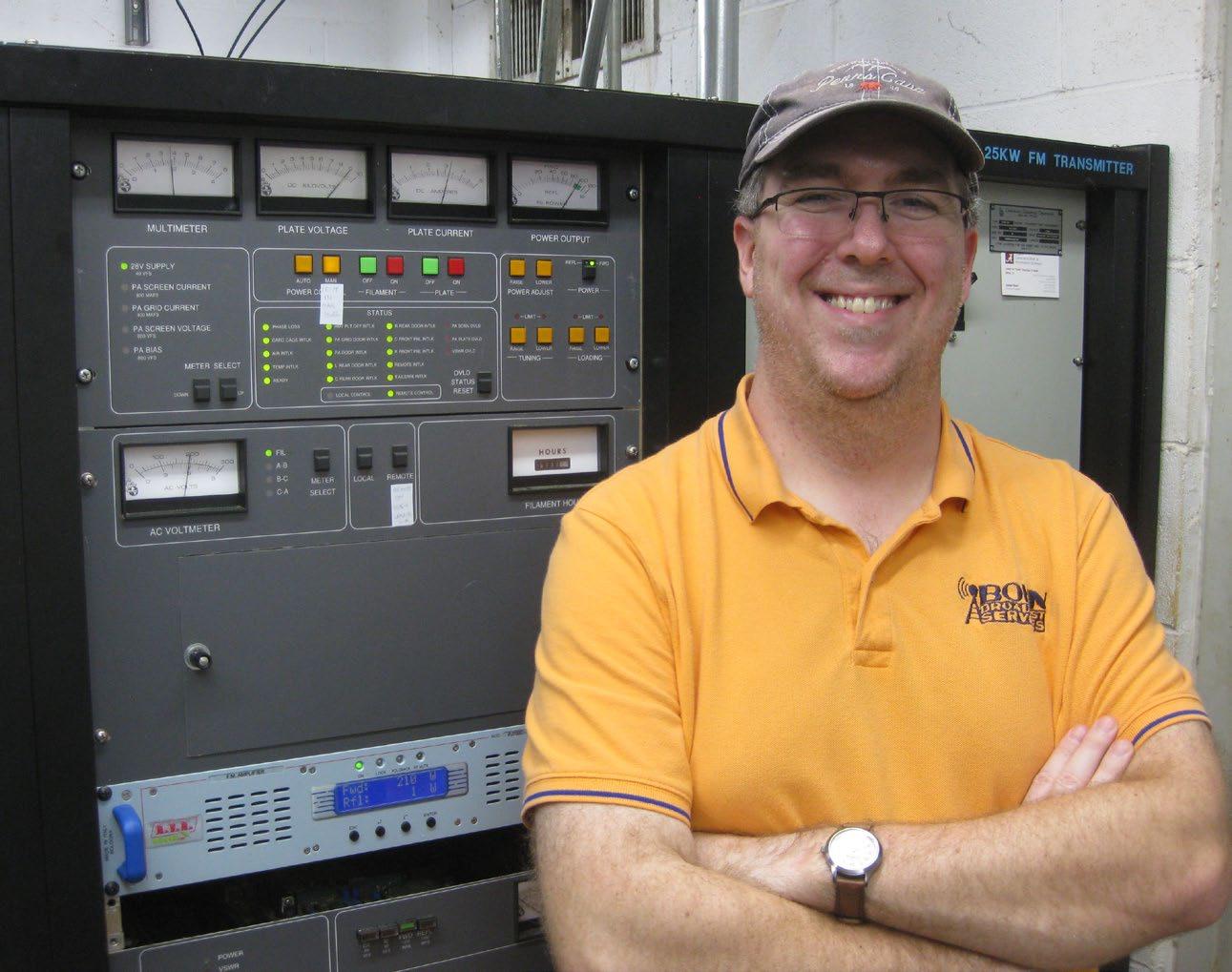
deployments restoring connectivity after natural disasters in Asheville and Tampa last fall.
“That’s the biggest benefit to satellite: It’ll work pretty much anywhere you can see the sky, no matter how remote” Bohn said.
Radio-centric
support
MaxxKonnect offers a bundled package that includes satellite and unlimited LTE failover at a fixed monthly rate. At one station in Houston, the satellite modem failed — but the staff didn’t even notice, Bohn said, as the system had automatically switched to LTE.
MaxxKonnect was able to dispatch support and replace the modem quickly.
Regardless of the delivery method, Bohn encourages broadcasters to work through broadcast knowledgeable providers.
“There are all these different ways to get connectivity to your sites,” he said, “but does anyone at those companies actually understand what you’re trying to do?”
Working directly with cellular carriers may introduce other complications. Many budget cellular options use “roaming SIMs” which often have IP addresses originating from other countries.
“If your IP address originates from Belgium, well, that can cause a problem — there’s a lot of geo-fencing and IP restriction going on due to security risks,” Bohn said.
With so many options, the array of audio delivery choices can feel overwhelming. But Bohn encourages broadcasters to start by evaluating their needs.
“The flexibility of IP control and monitoring is something everyone’s implementing now,” he said. “But the legacy 950 is still a well-built, reliable option — and we’re supporting it.”
Internet reliability is still a matter of concern
“In some respects it’s still a bit like the wild, wild west”
Tommy McElmeel is broadcast telemetry and regional engineer for Family Radio He worked for K-LOVE from 2007 to 2020, including seven years as the IT infrastructure manager and the rest as infrastructure architect.
Tommy we’re asking our experts to identify important current trends in how radio delivers audio and data to our transmitter sites.
Tommy McElmeel: The biggest change is a reliance on internet to provide audio for transmitter broadcast. Although this is a less expensive model, reliability also needs to be considered. In some respects, the internet is still a bit like the wild, wild west. It is far more reliable than it was even five years ago, but I believe there is too much reliance on service providers like Azure and AWS.
As a lifetime IT engineer, I’m always a fan of multi-path. Have a primary path, perhaps your high-bandwidth and less-expensive path, but always have a backup path with automatic switching.
Be careful how you use SaaS. When you give up some control of your system in favor of saving money, it might
come back and bite you when there is a failure that is out of your reach.
With so many different bands available, including licensed vs. unlicensed options, how can a broadcast choose?
McElmeel: The best option for audio delivery always depends on the location and which options are available. Satellite delivery is very reliable, but you cannot install a satellite dish at all locations. Internet delivery is a quick and easy delivery method but can come with reliability issues. STL can be a good option but requires two sites. There is not one standard option that is going to work at all sites. Embracing all options available and picking the best option (or options) for a particular site has always been my goal.
What role do satellite internet-based systems like Starlink play now?
McElmeel: At Family Radio we have started deploying Starlink to some sites for telemetry and control. This is a great option, especially when there isn’t another highbandwidth solution available. Even if there is, Starlink is likely less expensive if you’re not providing audio 24/7.
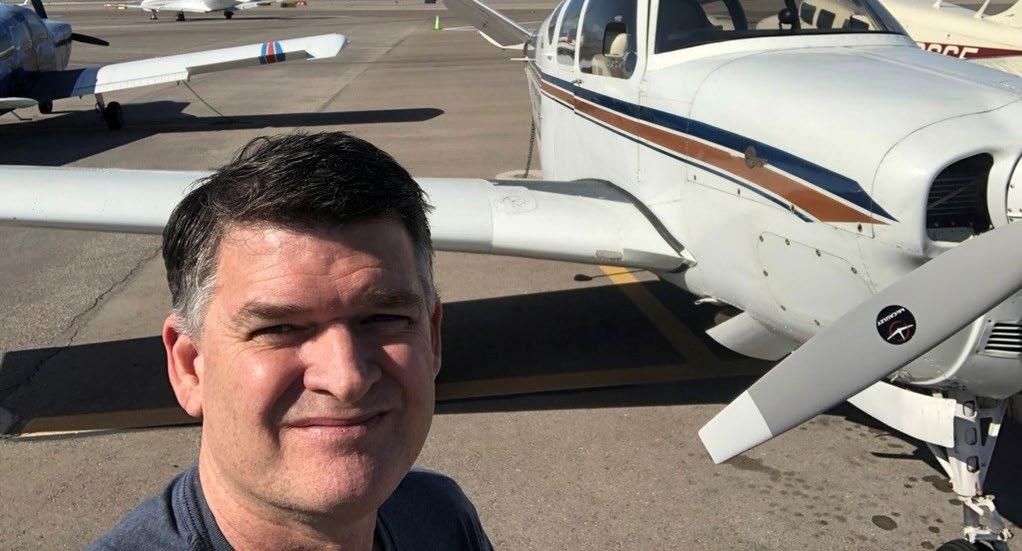

Getting Data Up the Hill
If you are providing audio over Starlink, you might get bumped into the next bandwidth bracket. At that point, the cost might be more than a terrestrial solution available.
What are the implications of the growth in use of the cloud in radio air chains?
McElmeel: My largest concern for having the air chain in the cloud is the reliance on service providers like Azure and AWS. In the past 10 years or so I can think of two instances where AWS services went offline for one reason or another. When that happens, a large portion of the internet just stops working. Several DNS services fail, a lot of e-commerce fails, and if your air chain relies on these services, your audio fails.
What options does a station have if its site lacks cell or hardwired connectivity?
McElmeel: For the most extreme transmitter sites, traditional satellite is a great option. If you’re running IP and audio, it can get expensive. Starlink is a much less expensive option, but I need to gather more data over time to speak on its reliability. At the five or so sites where Family Radio has deployed Starlink, we have had great success so far.
Many transmitter sites lack substantial IT infrastructure. What are the implications of that?
McElmeel: As radio equipment has grown and improved, the reliance on IT infrastructure has grown exponentially. If we aren’t there already, the time is coming where equipment manufacturers are going to assume internet connectivity will be present at the transmitter site. For sites that lack substantial IT infrastructure, it’s going to become more difficult to support those sites as equipment is replaced and modernized.
In my telemetry role at Family Radio, I want all the data I can get from the equipment to help troubleshoot issues efficiently and accurately. I want devices that can self-heal and report back to HQ that there was an issue. More and more this is going to rely on reliable IT infrastructure.
“ When you give up some control of your system in favor of saving money, it might come back and bite you when there is a failure that is out of your reach. ”
What are the implications of using IP links for obtaining support and configuration help from suppliers?
McElmeel: When inviting suppliers and vendors onto your network for support, security is the first thing that should be considered. Yes, we want to make it easy for support personnel to get to solving problems, but not at the expense of security. Far too many times I’ve seen radio equipment with Telnet enabled when SSH is available. Default user names and passwords are almost ubiquitous at transmitter sites. Equipment needs to be secured, yet accessible to those who require legitimate access. Layered security is required.
What can we learn from recent natural disasters in North Carolina and California about keeping links operating?
McElmeel: Disasters come in all shapes and sizes. Sometimes it’s a bad firmware update on a single piece of equipment and sometimes it’s a hurricane. All we can do is build the most reliable and redundant infrastructure that the budget will allow.
I believe that the difference with large disasters is that radio plays a different role. We aren’t talking about the inability to conduct e-commerce, we’re talking about people’s lives. In large-scale disasters, people are looking for information, and radio might be their only line of communication. That might be updates on the situation, or advice on how to prepare or evacuate. People also look for reassurance that they’re going to be OK.
Radio needs to function during these events. Engineers need to design robust and reliable systems to ensure that messaging can continue to get out.
What practices do you recommend to create redundancy and ensure continuity of operations; and how can we secure the “pipe” against external threats?
McElmeel: Redundancy begins with trying to imagine failures that you have never seen or maybe have never occurred. How do you keep your system running when you encounter various issues? Sometimes two “never been seen before” events happen at the same time. Any single point of failure that you can identify in your system should be eliminated, when budget allows. Sometimes you’re forced to compare the cost of redundancy against the cost of system failure.
Meanwhile it’s usually not the “pipe” that the bad actors go after, it’s the unsecured equipment. Default user names and passwords should be changed. Telnet should be disabled in favor of SSH. Firewalls should be utilized at all points of entry to the network. Relevant firmware updates should be applied to aging infrastructure. Equipment that cannot be secured should be replaced with a modern device.
Tech support requires facts, not assumptions
Here are a few things I’ve learned in helping our codec users
Writer Paul Cintolo Tech Support Manager, Comrex Corp.
In my job at Comrex, I help customers maintain and support their video and audio broadcast equipment. Much of this support relates to IP audio codecs used in studio-to-transmitter links. Support cases arrive in waves, so we are constantly riding the tide — sometimes things are relaxed, sometimes we are extraordinarily active. It’s not uncommon to experience a lot of activity prior to a heavy sports season or before a big election, but our team supports users all over the globe, so an attempt to predict how busy things will get is easier said than done. For each case, the associated details and context could be similar or different compared to the previous
encounter. Our team has to play the role of detective and acquire as many details as possible. Additionally, we need to refresh the data collection process without assumptions every time to be sure we’re gathering details in an unbiased manner.
As you can imagine, if the details are not accurate or are filtered, someone could head down the wrong troubleshooting path, wasting a lot of time and creating confusion — a lose-lose situation. So precision is key.
As I mentioned, much of this work involves STLs as well as station-to-station links. Of course, no one wants anything to go wrong. But in reality, an enormous number problems can occur even without conscious
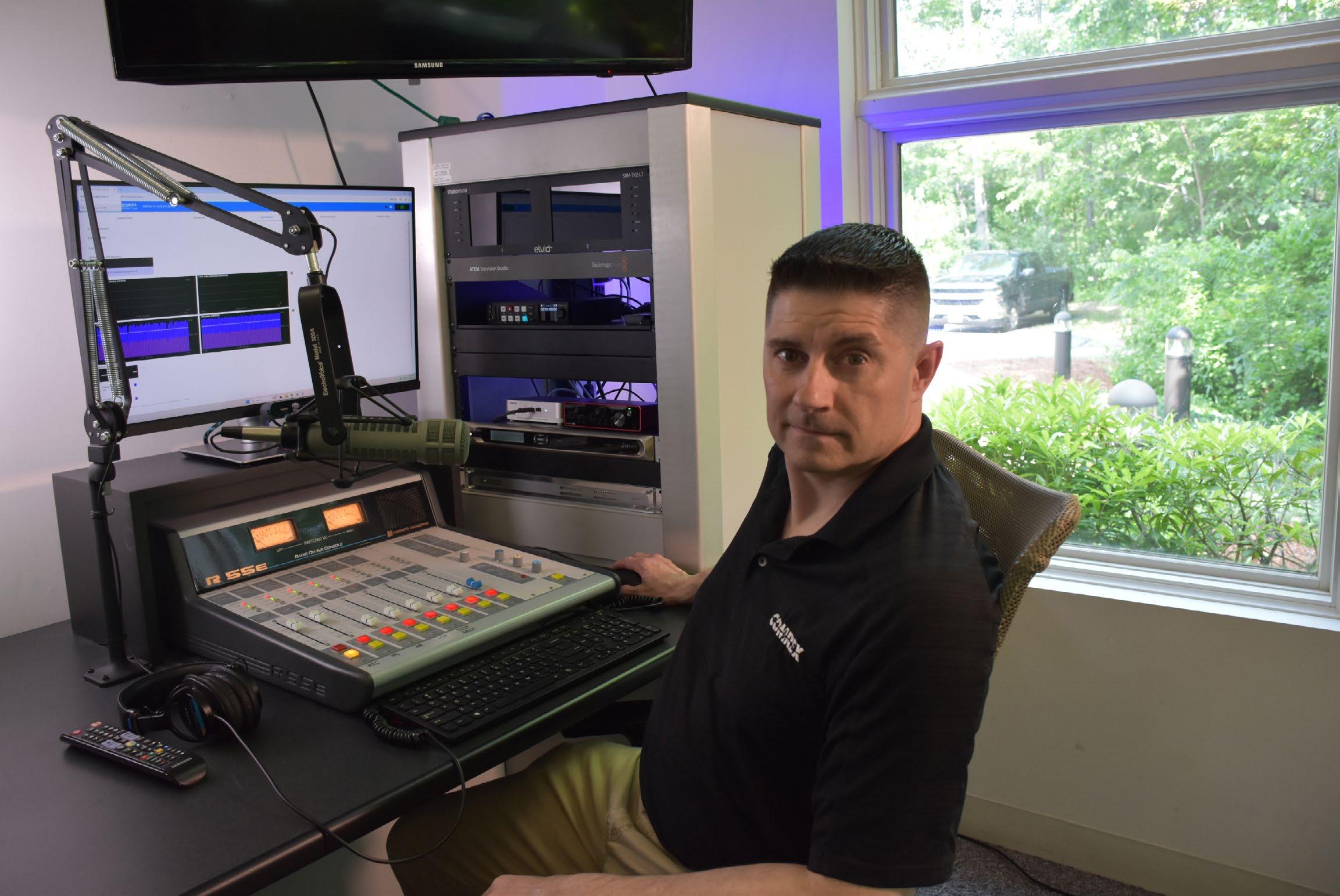
Getting Data Up the Hill
intervention — power surges, ISP changes, firewall policy updates, etc.
It is clear from our experience in recent years that even more stations now operate with fewer full-time engineers. We interact more frequently now with parttime contract engineers who manage the engineering of multiple stations, which can reduce the amount of time an engineer is available to help solve a given onsite problem.
We also more frequently now encounter engineers who know few details about a station because they are new to the outfit and are just learning about it for the first time, as are we.
In either situation, time is precious.
A common example might involve audio dropouts: “Paul, my tower codec is indicating a lot of packet loss, what happened to it?”
Typically, this will boil down to a network issue rather than the codec, but we need to put on a detective hat
we know where to focus additional efforts. This saves an incredible amount of time.
Following up, one can start testing the simple stuff — swapping cables, assessing bandwidth or even contacting an ISP to have them confirm if the site is having an issue.
We manufacturers each have our own secret sauce and baked-in codec features to try to work around adverse network conditions. But if you’ve identified a bad link, Comrex advocates isolating and fixing that link before it gets worse. For example, a faulty transmission line on the exterior of the building or down the street could spiral further out of control if inclement weather impacts the situation.
People will ask me what working in tech support is like. I describe it as a 50/50 ratio, where 50% is technical and the other 50% is relational. We must keep in mind that we might be communicating with a user who is a talent, or a general manager, or a broadcast engineer who has
“ We need to put on a detective hat first and start asking pertinent questions, as well as administer some tests to gather accurate data points.
”
first and start asking pertinent questions, as well as administer some tests to gather accurate data points.
We certainly don’t want to assume we know what the problem is and start throwing spaghetti at the wall. A better approach is first to establish where the problem is, then what it is, because when you are pushing or pulling IP data, you don’t really know if it is an issue with the source location pushing data or with the receiving location pulling. If you can test each location against a third, you can establish a much clearer picture to help isolate the problem.
This is an ideal scenario, but let’s say we have a studio codec sending data to a tower codec. If the studio transmits to the tower, disconnect them and connect the studio to an alternate codec/location. Does the alternate codec exhibit the same issue? If not, connect the alternate codec to the tower. Does the tower still exhibit the same issue?
If the problem is reproducible regardless of which codec/location connects to the tower, and assuming everything else looks stable, you likely are dealing with an issue associated with the tower.
Essentially, we want to see if the problem stays put or moves. Though we don’t yet know what the problem is,
40 years of experience.
Then of course we can ask questions that are appropriate to their role and background. But how we ask is equally important because the person’s state of mind makes a difference too. If a user is frustrated because of an off-air situation, our team must remain calm so that we don’t excite the situation and delay a resolution, especially when a system is down and we don’t have the luxury of time.
After we gather essential details and apply effective communication that benefits both sides, we can make progress. Many engineers want to pull themselves up by their own bootstraps. We appreciate and sympathize with that mindset. But when time is a factor, when the mission is critical, we encourage our users to lean on us for support so their gear can operate as expected in a timely manner, as well as understand the best practices involved for their workflow.
That’s a win-win!
The author was a computer systems engineer for many years. He then pursued his love of communications by returning to school and honing his production and operation skills as a freelancer and TV operations manager. He joined Comrex in 2011.

Getting Data Up the Hill
MPX codecs reduce operational costs
Also, more stations are using multiple internet providers
Jacob Daniluck is vice president of sales for the Americas at Tieline. He specializes in upgrading broadcast codec infrastructure connecting over terrestrial, satellite and wireless IP networks and technologies.
What important developments should we know about, in how radio stations deliver audio and data to their transmitters?
Jacob Daniluck: The latest trend we’ve seen at Tieline is with MPX codecs for STLs. This functionality has allowed radio stations to reduce operational expenses by backhauling equipment back to the studio by reducing the amount of power and maintenance at tower sites.
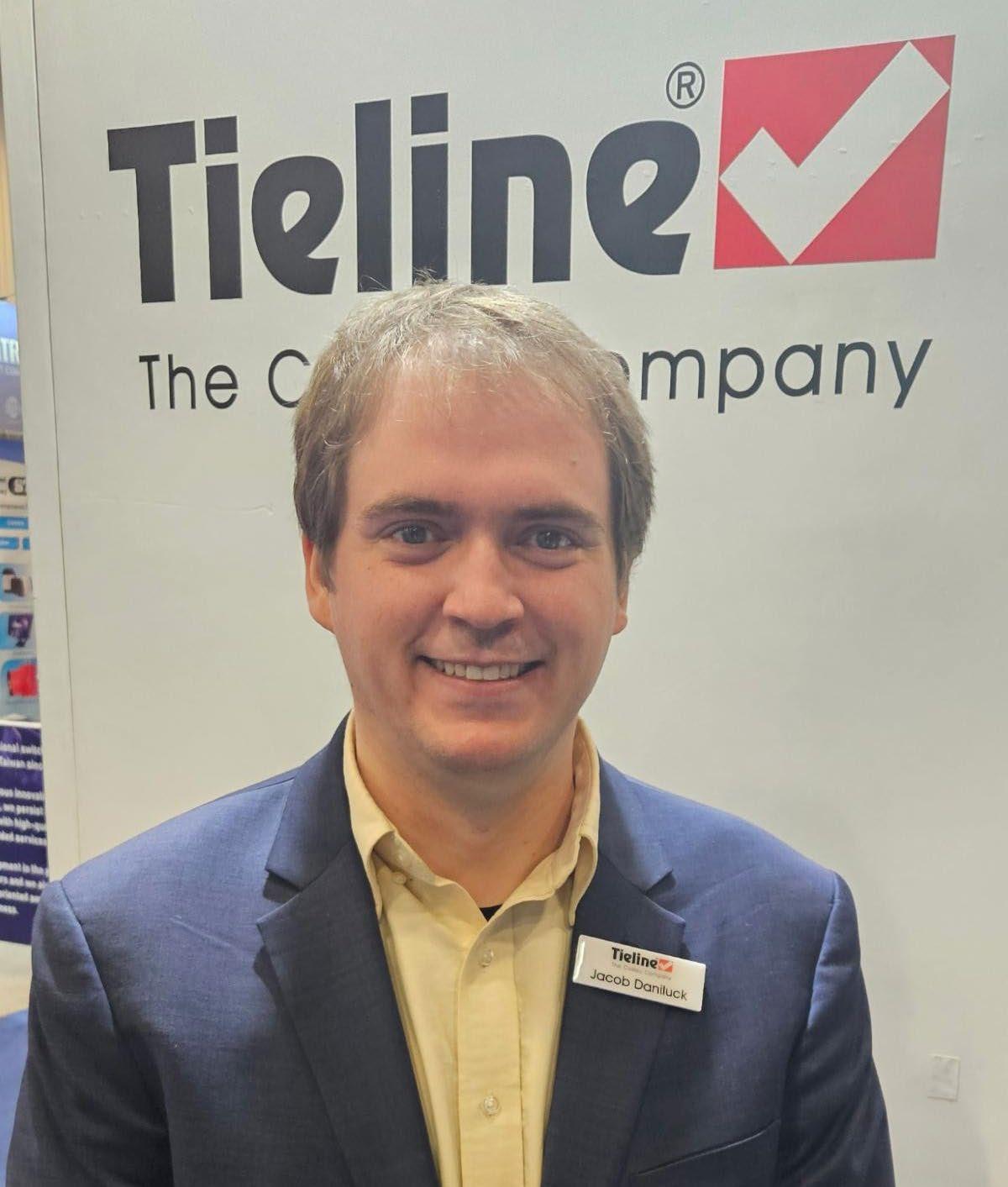
The other big trend we’ve noticed is the increase in dual network connectivity at tower sites. As towers are the most mission-critical aspect of a radio station operation, engineers are starting to drop in multiple internet providers to help leverage a more robust connection back to the studio. This is one of the key reasons we redesigned the newest Bridge-IT IP codec to incorporate dual LAN technology for redundancy.
What can an engineer do if a transmitter site lacks cell or hardwire connectivity?
Daniluck: If there is no cellular or hardline solution from an ISP, I’d say it’s time to start looking towards terrestrial satellite links. Yes, terrestrial satellite ISPs may not be the cheapest on the market, but all the benefits you receive by having an internet connection should outweigh the costs of maintaining a satellite connection. For those who unfortunately can’t get a good satellite connection, I’d suggest relaying an IP connection from another location using unlicensed or licensed wireless repeaters.
How can stations harden or prepare station audio for delivery over today’s links?
Daniluck: The best practices that we like to follow for STLs are based around diversity and redundancy. This is because not all internet links are created equally. We’ve seen several clients lately receive hundreds of Mbps at their tower sites, and they think just because they are approaching 1000 Mbps they should be good, period. However, reality would state that hundreds of Mbps is most likely good enough for the link itself, but that doesn’t mean it’s reliable enough for the mission-critical aspect of your business.
This is one of the reasons internet providers offer Service Level Agreements, to help ensure uptime is maintained at your location. However, SLAs are expensive to maintain operating, and this is why Tieline developed our SmartStream Plus protocol years ago for real-time redundancy over multiple internet links. This way you don’t need SLAs with your ISP unless you have other reasons to pursue those types of contracts.
What is the role of MicroMPX in this discussion?
Daniluck: The ability to connect over WANs like the internet at low bitrates with µMPX is a game-
“ Engineers are starting to drop in multiple internet providers to help leverage a more robust connection back to the studio.
changer for broadcasters, as it dramatically expands the number of STL sites that can receive composite signals. µMPX also facilitates multipoint distribution via multicasting or multiple unicasting. This reduces costs by affordably replicating streams at the studio using a single encoder, similar to how baseband IP audio streams can be replicated in audio codecs. Costs are reduced by eliminating the need for multiple encoders, as well as processors and RDS equipment at transmitter sites. When this is multiplied across multiple STL sites, the savings can be enormous.
How can we secure radio’s STL connections against bad actors?
Daniluck: Always use secure passwords — never the default one! Apart from recommending firewalls and VPNS, some other features we have incorporated include the ability to install SSL security certificates to ensure codecs are trusted devices within your network. Tieline codecs also
”
have the ability to configure SIP filter lists, which provide filtering of SIP URIs and User Agents to provide greater security when using SIP. Tieline also offers firewall settings to enable or disable a range of firewall-related network services and we have implemented CSRF protection (CrossSite Request Forgery) which avoids unwanted attacks on web applications.
Other thoughts?
Daniluck: Go and search Shodan.io and look up any internet-based product name. You’ll find a list of IP addresses with said product scannable on the open internet. Sometimes these devices are behind some sort of firewall for protection, and other times they are wide open with default user names and passwords. Without proper firewalls, or edge devices, sites like Shodan will easily scan your IP, store that information and then someone will use that information to exploit your broadcast facility.

Our need for bandwidth has increased almost exponentially
IP- and cloud-based systems bring new scalability and flexibility

Writer
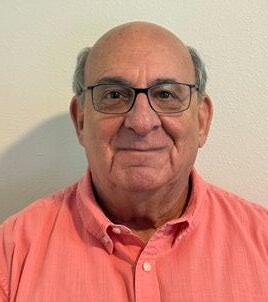
Ted Nahil 2wcom Systems
Ted Nahil, CPBE, has an extensive background in radio and satellite communications. He has served as a chief and director of engineering in several major markets and has worked in sales for top RF manufactures. He is U.S. sales representative for 2wcom.
As you know from reading the opinions on the preceding pages, the shift to IP-based studio-to-transmitter links represents the most significant change in the way radio stations deliver their audio and data to their transmitter sites.
Telco-provided services like T1 are either no longer available, or in markets where they are, the services are prohibitively expensive. Licensed Part 74 RF links are still in widespread use, but in most markets, the 950 MHz
band is saturated.
Stations that are not broadcasting HD Radio programming, or those broadcasting a basic HD1-only HD Radio program, might still be able to get by with an STL channel in the 950 band, but with few exceptions, what you’ve used for years as a primary means of getting audio, and eventually some data, to your transmitters has become unsuitable because of the sheer amount of information you need to move to your site.
Consolidation of transmitter facilities, and of radio stations, has resulted in many engineers having to move audio and data for multiple stations to a single location. The need for bandwidth has increased almost exponentially, and today’s chief engineer can easily be responsible for getting audio and data for five, six,
Getting Data Up the Hill
seven or more radio stations to the same physical transmitter site.
• You can use a modified conventional 950 STL system, converted to all IP, and with a very narrow backhaul channel.
• You can use a Part 101 licensed, duplex radio link with megabytes or even gigabytes of bandwidth.
• You can use an unlicensed, IP-based, duplex radio link in the 2.4 or 5.8 GHz band, but these links are subject to interference from a growing number of sources and as a result, they are not as reliable today as they were when they became an option a decade or so ago.
• Or you can use an IP “pipe” provided by a local ISP if you have that service available for you at your transmitter site.
Regardless of your choice, the common element here is that these are IP-based solutions, and they give you the ability to move a lot of audio and data to your transmitter site.
Codecs that can transmit and receive µMPX streams are becoming more prevalent as well, as a lot of stations deal with links that don’t have the bandwidth necessary to transport uncompressed audio or full MPX streams, and the data that goes with those signals.
We are also seeing a focus on resilient links utilizing transport mechanisms like Secure Reliable Transport (SRT) and Reliable Internet Stream Transport (RIST). These tools are some of the latest available to users of IP-based STL systems that help mitigate network issues inherent in every IP path like latency, jitter, dropped packets and missing packets.
Error mitigation is beyond the scope of this article but suffice it to say that most manufacturers of IPbased STL systems have come a long way in supplying tools to broadcasters to overcome many network connectivity issues.
The primary delivery methods of the recent past — RF and even satellite delivery systems — are increasingly becoming the backup delivery methods as IP-based STLs become more reliable.
Scalability
Along with these changing trends in delivery methods we are also seeing the beginnings of a shift toward centralized, cloud-based air chains. CBS News has been broadcasting its newscasts to affiliates entirely from the cloud since the pandemic struck.
At 2wcom, we see broadcasters beginning to embrace MoIN — Multimedia Over IP Network, which is an all-inone audio software solution. In its simplest form, MoIN is a multi-channel virtual audio over IP encoder and decoder platform that supports all common standards, protocols and audio qualities. MoIN installations can
be implemented on user-supplied hardware, a virtual machine, or totally in the cloud as a Kubernetes cluster for hardware redundancy. (There is a Radio World article, originally part of the eBook “What’s Next for Virtualization,” about Kubernetes from 2021, read it here.)
One main advantage of a cloud-based infrastructure is that it is completely scalable. The system grows as the station’s needs and requirements grow. Regardless of where the actual hardware is located, software designed to run on cloud-based systems needs to operate reliably in both small- and large-scale environments, and it needs to do this on off-the-shelf hardware.
A versatile system like MoIN allows the station to deliver audio that is scaled via the coding choice to accommodate the bandwidth available at the transmitter site. For example, the path to a main site may have much more bandwidth than the path to a backup site. A versatile distribution system can easily account for this and generate streams that fit in the available bandwidth. One path may be linear; a backup path may be compressed. Algorithms like Opus give the station the ability to deliver high-quality audio over narrow-bandwidth paths for backup while a linear/PCM algorithm is used for the main transmitter path.
Even for stations not in the cloud, those same coding choices — Opus and linear, for example — allow a tremendous amount of flexibility for delivering discrete audio.
Many stations using IP-based systems choose MPX or µMPX codecs to deliver baseband audio to the transmitter site. While IP-based MPX systems can require a lot of bandwidth — three to four megabits before any error correction schemes are employed — µMPX systems can deliver baseband audio in as little as 380 kilobits before error correction. µMPX saves considerable bandwidth on a backup path, for example. In a singlefrequency network (SFN) application, using MPX or µMPX over IP allows you to keep the processing at a single, central point (usually the studio).
This is important because it means that there is only one setting in the system for some critical variables like pilot injection and pilot phase, and the audio is processed the same for both (or more) transmitter feeds. SFN networking success is dependent on having the modulation indices of all the transmitter signals as identical as possible. MPX SFN systems have a very good track record. Some transmitter manufacturers have recently been testing SFN operation using µMPX with great success.
In any IP-based system, redundancy is critical because of the nature of IP networks. Codec manufacturers offer various forms of redundancy, some for free, some at additional cost.
Look for systems that allow you to send the same
Getting Data Up the Hill
stream across two different paths for path redundancy. Usually, the requirement is that both streams be encoded using the same algorithm and at the receive end (the transmitter site), the codec uses one path as the primary and the second path as the backup. If packets are missing or dropped from the primary path, the receiver fills those gaps with packets from the other path.
The result of this kind of redundancy is “seamless” switching between main and backup paths and no audio glitching discernible to the listener. Some codecs have the ability to deal with streams that are encoded differently. The results are similar in that there are no audio “holes” discernible by the listener but there may be a glitch or a tonal change that is detectable.
Similar to path redundancy, some codec manufacturers use the same physical path to send
possible. Router and switch prices have come way down, so use a router or layer 3 switch that supports portmapping and VPN functionality whenever you can.
Change the default IP addresses of any device on your network — routers, switches, codecs, processors — and use non-routable (i.e., private) IP addresses other than the defaults.
Almost every network device you can buy has a default IP address of 192.168.1.1. Change it!
The two major transmitter manufacturers’ HD Radio devices — importer and exporter, and HD inputs to exciters — have default IP addresses that start with 10.x.x.x for example. Change default user names and passwords if you are not forced to do this when you initialize your equipment.
Set up accounts with different permission levels. Your air talent certainly doesn’t need permission to add users
“ The primary delivery methods of the recent past — RF and even satellite delivery systems — are increasingly becoming the backup delivery methods as IP-based STLs become more reliable.
two identical streams to the transmitter site, with the second stream delayed by some amount of time. This implementation allows the receiver to deal with packet loss by comparing the two streams as they arrive separated by some period of time. This time diversity functionality adds yet another method to deal with network issues.
In addition to these redundancy methods, in an STL system any redundancy is better than none. You may look at multiple ISPs to guard against a failure of one ISP network, or you may use an ISP in conjunction with a private IP-based microwave network. Wherever possible, any redundancy is better than no redundancy.
Safety
One last point to consider is that any STL system that uses IP-based devices is subject to the whim of hackers who can turn a beautiful Friday afternoon into a nightmare. How do you keep your network safe?
Having a separate Ethernet port on your IP codec that is used solely for management adds a layer of security to your system. Look for codecs with three ports: two for streaming, one just for management. Use a VPN if
to a network device’s configuration menus! When you are setting up new devices for your IP-based STL, don’t skip important steps. “I’ll get to that part later” almost never works!
Conduct penetration testing on your equipment using tools available on the internet. Most codec manufacturers continually test their equipment. At 2wcom, for example, there are multiple procedures in place to ensure firmware quality and security that include automatic dependency checks for known vulnerabilities, static code analysis using AI-assisted detection, and vulnerability scanning conducted by thirdparty security specialists. Much like anti-virus software used on a computer or smart device, manufacturers are motivated to ensure that their products remain secure and reliable.
As our industry shifts to IP-based STL systems and cloud-based content delivery systems, you can take full advantage of the scalability and flexibility of this equipment. A little planning and regular, thorough testing of your system and its components will deliver the reliability you need in an STL link, and keep your Friday afternoons from becoming a nightmare!
